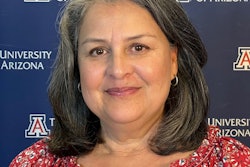NAFEO Outlines New Policies to Congress
Advocacy group seeks $30 million program for predominantly Black colleges
By Charles Dervarics
A leading advocacy group is asking Congress to create a $30 million program for “predominantly” Black colleges, or urban institutions that lack the history of HBCUs but face many of the same challenges.
“Many of these schools are located in inner-city communities and were once majority institutions and became ‘predominantly’ Black institutions with demographic shifts,” said Dr. Frederick Humphries, president and chief executive officer of the National Association for Equal Opportunity in Higher Education (NAFEO).
While these institutions are historically different from HBCUs, they face many of the same issues as their older counterparts, he said in testimony to a House of Representatives panel in late March.
Predominantly Black colleges are two- or four-year colleges with a high percentage of low-income African American students, and many receive inadequate state funding. Though they are eligible for some federal grant programs for developing institutions, most face stiff odds based on the sheer number of colleges vying for these dollars, Humphries said.
With the advent of new funding streams for Hispanic-serving institutions and tribal colleges, along with the longtime program for HBCUs, the federal government still is not reaching all minority-serving institutions.
“As it stands, all other major ethnic classifications have a specific designation for institutional funding within the Higher Education Act — except for predominantly Black institutions of higher education,” Humphries said. NAFEO is recommending the program as a new section of Title III within the Higher Education Act (HEA).
Humphries also outlined a series of proposals for other small new programs for minority-serving institutions and students of color. Included are:
• Emerging doctoral programs: NAFEO seeks a new $25 million competitive grant program to help HBCUs with successful master’s programs expand those offerings to include doctoral degree programs. The program would get funds under Title III-B of HEA.
• Graduate fellowships: Humphries is recommending $20 million to increase the recruitment and retention of African Americans in graduate, professional and doctoral programs. This would serve as a companion to the emerging doctoral initiative, he said.
• Centers of excellence for minority teacher education: This $15 million initiative would create up to 10 centers to address current and future teaching shortages. “This program has broad-based support across the higher education community,” Humphries said.
• Computers for freshmen: NAFEO is seeking an additional $20 million in Title III funds to help freshmen students obtain their own computers. The association presented data showing that only 12 percent of students typically have computers at HBCUs. The rate among majority-White institutions is about 55 percent.
• Health programs: With a new $30 million program, HBCUs could create new doctoral programs in medical and health-related fields to address health disparities among the races, NAFEO says. The program would operate out of the Center on Minority Health at the National Institutes of Health.
NAFEO also wants to expand funds for two new projects launched on a small scale this year. For example, it is seeking $6 million for the Urban Thrust program to improve college-going rates among urban youth.
With this funding, HBCUs would work with 10 school superintendents and mayors in major urban areas such as Atlanta, Baltimore, Chicago, Cleveland, Los Angeles and New York City. The project will help HBCUs “be more actively engaged in going into underserved urban communities to recruit students who otherwise might be left behind,” Humphries said.
In addition, NAFEO is seeking $4 million for an HBCU IT Center that would build on current small-scale initiatives to help colleges with their equipment and infrastructure needs.
While outlining new initiatives, Humphries sought increased funds for existing student aid and HBCU programs. NAFEO would provide another $20 million for HBCUs beyond the president’s request. If enacted into law, Black colleges would get $260 million under this program next year.
The association is asking Congress for $65 million for HBCU graduate institutions, $12 million above current funds and $7 million over the president’s request. Other recommendations seek $35 million for an HBCU endowment initiative plus increased funds for Howard University.
In the student aid budget, highlights include a $150 million increase for college work/study, $230 million more for Supplemental Education Grants and $42 million for new Perkins Loans. NAFEO also said it supports efforts to raise the maximum Pell Grant from the current $4,050 to as much as $5,100. Financial aid is critical because “a high percentage of the students HBCUs serve come from low-performing school systems and high-need families,” Humphries said.
Humphries was among more than a dozen witnesses appearing before the House Appropriations Subcommittee on Labor-HHS-Education. Other witnesses included a representative from the Council for Opportunity in Education who proposed an additional $50 million for federal TRIO programs serving low-income students. Congress is collecting testimony before it begins work on fiscal 2005 spending bills. The next fiscal year begins Oct. 1.
© Copyright 2005 by DiverseEducation.com















